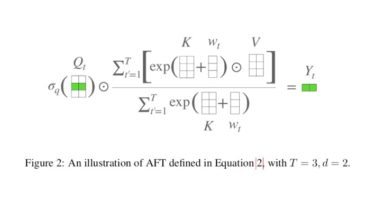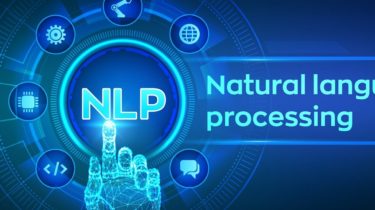A community made discord bot coded in Python and running on AWS
Pogbot This is an open source community ran project. Join the discord for more information on how to participate. Coded in python, running on AWS. Adding Pogbot To add Pogbot to your discord server, send a message to Pogbot#0689 with the keyword add. Getting Started Once Pogbot is added, run the command !setup to get antiquated with Pogbot. GitHub https://github.com/projectopengroup/Pogbot
Read moreMake visual music sheets for thatskygame
sky-python-music-sheet-maker This program lets you make visual music sheets for Sky: Children of the Light. It will ask you a few questions, and does not require previous knowledge of the command line to run. Usage Installation The program requires Python >= 3.6 and the following packages: PIL (preferably pillow) import_resources (for Python < 3.8) pyYaml mido (optional: for generating midi output) requests (optional: for generating a link to skymusic.herokuapp.com) The program can be installed by simply unzipping the code on [...]
Read moreA bike computer based on Raspberry Pi Zero with GPS and ANT+
Pi Zero Bikecomputer An open source bike computer based on Raspberry Pi Zero (W, WH) with GPS and ANT+. Including offline map and navigation. Abstract Pi Zero Bikecomputer is a GPS and ANT+ bike computer based on Raspberry Pi Zero(W, WH). This is the first DIY project in the world integrated with necesarry hardwares and softwares for modern bike computer. It measures and records position(GPS), ANT+ sensor(speed/cadence/power) and I2C sensor(pressure/temperature/accelerometer, etc). It also displays these values, even maps and courses […]
Read moreA tool for making a every day video if you take a picture of you everyday
Face-Every-Day-Maker-Studio This project is a tool for making a everyday video, which is timelapse video or slides video, of images but for face of a person, this if you take a picture of yourself everyday and you want to appreciate how you are getting old. In this readme file there’re the instructions for running the dev-working environment and the Motivation I made this repo to explain some of my students the basic concepts of git in practice, removing, and modifying […]
Read moreUnofficial PyTorch implementation of Attention Free Transformer (AFT) layers
aft-pytorch Unofficial PyTorch implementation of Attention Free Transformer’s layers by Zhai, et al. [abs, pdf] from Apple Inc. Installation You can install aft-pytorch via pip: pip install aft-pytorch Usage You can import the AFT-Full or AFT-Simple layer (as described in the paper) from the package like so: AFTFull from aft_pytorch import AFTFull layer = AFTFull( max_seqlen=20, dim=512, hidden_dim=64 ) # a batch of sequences with 10 timesteps of length 512 each x = torch.rand(32, 10, 512) y = layer(x) # […]
Read moreSimple, yet effective moderator bot for telegram
Samurai Telegram Bot Simple, yet effective moderator bot for telegram. With reports, logs, profanity filter and more :3 Personal bot, made for easy chat auto-moderation.Adds reporting functionality, profanity filtering (both english & russian languages are supported), logging system via private channel and much more!More of that, the bot code & functions can be easily extended and/or limited as you prefer. The code has NOT been polished and is provided “as is”. There are a lot of code that are redundant […]
Read moreTool for pretty printing and optimizing Lightning Network channels
Suez Tool for pretty printing and optimizing Lightning Network channels. Installation Install poetry poetry install poetry run ./suez Channel fee policy You can set channel fees by passing –base-fee and –fee-rate parameters. For example: poetry run ./suez –base-fee 1000 –fee-rate 200 You can override the channel fee policy by changing the FeePolicy class. Example implementation does the following: sets lower fee rate for channels with mostly local balance sets higher fee rate for channels with mostly remote balance sets medium […]
Read moreExtract phrase in the given text that is used to express the sentiment
Extract phrase in the given text that is used to express the sentiment. Capturing sentiment in language is important in these times where decisions and reactions are created and updated in seconds. But, which words actually lead to the sentiment description? This project aims to solve this problem. Powered using Pytorch + hugggingface Try it out. git clone https://github.com/shahules786/twitter-emotions.git cd twitter-emotions sudo docker build –tag twitter-emotions:api . sudo docker run -p 9999:9999 -it twitter-emotions:api python twitteremotions/app.py Server will start running […]
Read moreLanguage Translation with Transformer In Python!
This article was published as a part of the Data Science Blogathon Introduction Natural Language Processing (NLP) is a field at the convergence of artificial intelligence, and linguistics. The aim is to make the computers understand real-world language or natural language so that they can perform tasks like Question Answering, Language Translation, and many more. NLP has lots of applications in different fields. 1. NLP enables the recognition and prediction of diseases based on electronic health records. 2. It is used […]
Read more








